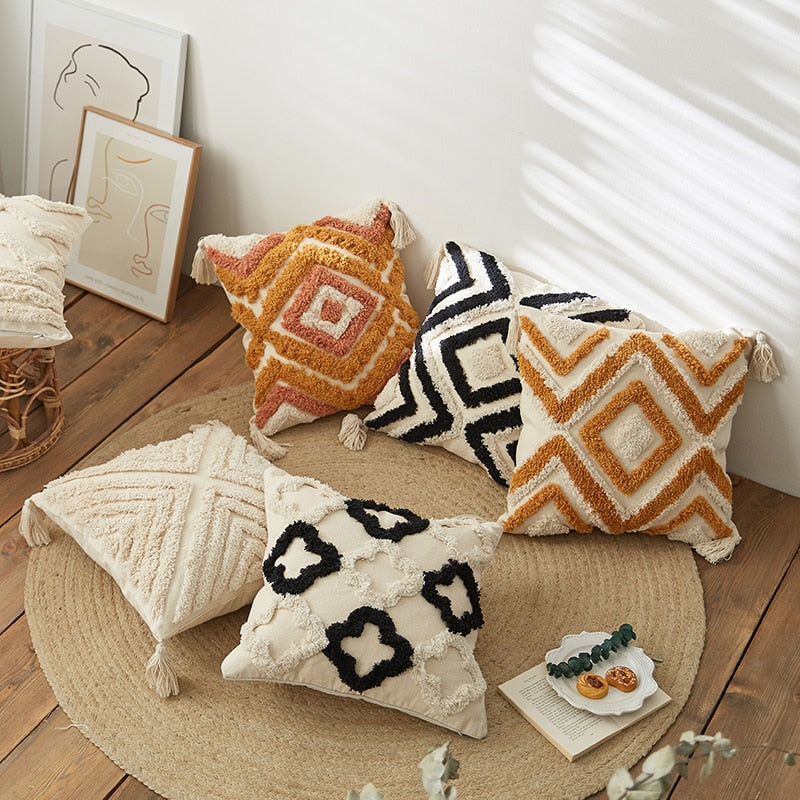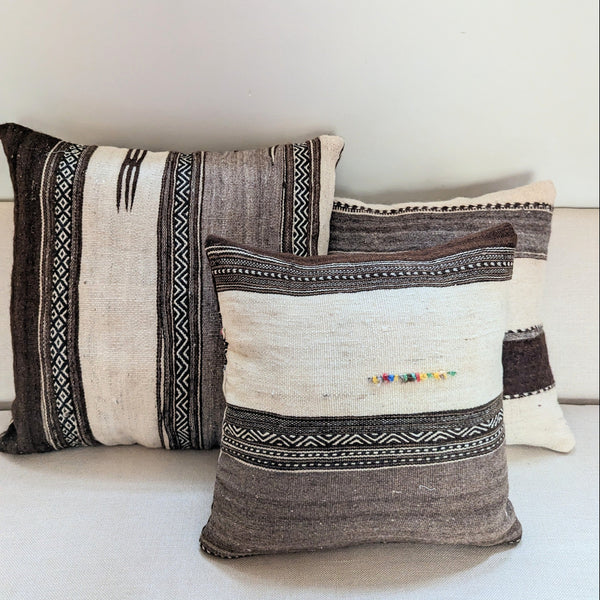Decorating your home can be an exhilarating journey, especially when you add unique pieces that tell a story. One such element that has captured the hearts of many is the Moroccan decorative pillow. These vibrant, eclectic pillows not only enhance your decor but also bring a slice of Moroccan culture into your living space. Let’s dive into everything you need to know about Moroccan pillows.
What Are Moroccan Decorative Pillows?
Moroccan decorative pillows, often adorned with intricate patterns, rich textures, and vibrant colors, are a staple in Moroccan décor. They reflect a deep cultural heritage and are typically made from materials such as wool, cotton, and leather. The designs may include geometric patterns, floral motifs, and tribal symbols, each with its own significance.
The Allure of Moroccan Pillows
I’ve always believed that the heart of a home is how it feels. One particularly rainy afternoon, I decided to re-decorate my living room, swapping out plain throw pillows for a cluster of colorful Moroccan pillows. Instantly, the room transformed into a vibrant haven that not only felt cozy but also told a story of culture and tradition.
Why Choose Moroccan Decorative Pillows?
- Unique Designs: No two pillows are exactly alike, thanks to traditional handcrafting techniques.
- Versatile Styles: They complement various decor styles, from bohemian to modern.
- Comfort: Often filled with plush materials that add comfort to your seating areas.
Types of Moroccan Decorative Pillows
Understanding the different types can help you choose the right ones for your home.

1. Kilim Pillows
Kilim pillows are made from flat-woven textiles. They are colorful and have a slightly rough texture, making them perfect for adding a rustic touch to your decor.
Pros and Cons of Kilim Pillows
| Pros | Cons |
|---|---|
| Durable and long-lasting | Can be scratchy on the skin |
| Unique patterns | Higher price point |

2. Boujaad Pillows
Boujaad pillows showcase vibrant colors and geometric patterns, usually found in Moroccan Berber homes. They represent a mix of natural dyes and traditional weaving techniques.
Pros and Cons of Boujaad Pillows
| Pros | Cons |
|---|---|
| Bright and eye-catching | Requires special care in cleaning |
| Soft and comfortable | Not as widely available |

3. Azilal Pillows
Textiles from the Azilal region are known for their playful colors and abstract designs. They are typically handwoven by Berber women and have a unique charm.
Pros and Cons of Azilal Pillows
| Pros | Cons |
|---|---|
| Handcrafted and unique | Can be pricier due to craftsmanship |
| Adds a pop of color | May fade with time if not cared for properly |

Choosing the Right Moroccan Decorative Pillow
When selecting the perfect Moroccan pillow for your space, consider the following:
1. Material
The material affects not only the aesthetic but also the comfort level. Wool is warm and inviting, while cotton is lighter and more breathable.

2. Color Palette
Choose colors that complement your existing decor. Whether you want bold contrasts or subtle harmonies, Moroccan pillows can fit the bill.
3. Size
Pillows come in various sizes. Larger ones can be used as floor cushions, while smaller ones are great for sofas and beds.

Care Tips for Moroccan Decorative Pillows
Keeping your Moroccan pillows in top shape requires a bit of care:
1. Spot Cleaning
Use a damp cloth to gently clean any stains.
2. Professional Cleaning
For a deep clean, consider professional cleaning services that specialize in textiles.
3. Avoid Direct Sunlight
To prevent fading, keep your pillows away from direct sunlight.
Incorporating Moroccan Pillows into Your Home Decor
Let’s explore some creative ways to use these beautiful pillows in your home.
1. Living Room
Mix and match different styles on your sofa to create an inviting seating area.
2. Bedroom
Layer them on your bed for added texture and comfort.
3. Outdoor Spaces
Use weather-resistant pillows for a cozy outdoor seating arrangement.
Comparison Table of Popular Moroccan Pillow Styles
| Style | Material | Average Price | Best For |
|---|---|---|---|
| Kilim | Wool/Cotton | $60 – $150 | Rustic interiors |
| Boujaad | Cotton/Wool | $70 – $180 | Bohemian styles |
| Azilal | Wool | $80 – $200 | Modern chic |
Frequently Asked Questions (FAQs)
1. How do I clean my Moroccan decorative pillows?
Spot cleaning with a damp cloth is best. For deeper cleaning, seek professional cleaners.
2. Are Moroccan decorative pillows expensive?
Prices range from $60 to $200, depending on the material and craftsmanship.
3. Can I mix different Moroccan pillow styles?
Absolutely! Mixing styles can create a unique and eclectic look in your space.
4. Where can I buy authentic Moroccan pillows?
Check out local artisan markets or reputable online stores specializing in Moroccan decor.
Final Thoughts
Moroccan decorative pillows can transform your space into a cozy, inviting sanctuary filled with culture and history. They are not just decorative items; they are pieces of art that enhance the beauty of your home. Having experienced the visual and emotional uplift from introducing these pillows into my home, I encourage you to explore and indulge in their diverse styles and colors. With a bit of care, your Moroccan pillows will remain stunning focal points in your home for years to come.